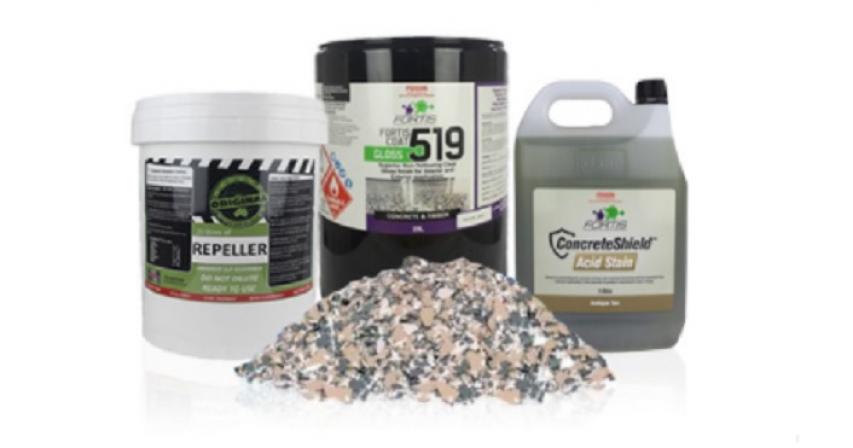What Are Concrete Sealers and its Importance?
- 4 years ago

Concrete sealers are applied to concrete to protect it from corrosion, surface damage, and staining. They block the pores in the concrete to reduce the absorption of water and salt or form an impermeable layer preventing such materials from passing. Concrete damage attributes to surface moisture intrusion. The most pervasive form of concrete damage is surface scaling from the freeze. Other damage includes alkali-silica reaction, chemical intrusion, and corrosion of steel reinforcement. In the past attempts to protect Contreat have included sealers ranging from wax to linseed oil. Nowadays high-quality concrete sealers can block 99% of surface moisture.
There Are Two Main Categories Of Sealers - Topical Sealers And Penetrating Sealers.
Topical Sealers - topical sealers provide visual enhancement as well as topical protection from chemicals and stains. They need a clean, dry surface during application to gain adhesion. Topical sealers alter the coefficient of friction which can make substrates stick when they are wet- a condition that can be remedied by adding anti-skid materials. Lifespan is 1 - 5 years, all the high and epoxy Systems can last significantly longer.
Penetrating Sealers - penetrating sealers may be applied to damp or dry surfaces and must be properly matched with substrate porosity to effectively penetrate the surface and react. The chemical reaction bonds ingredients within the substrate blocking surface moisture. Penetrating sealers do not modify substrate appearance or traction. The lifespan is 5 years or more.
Major Concrete Sealer Chemistries
Acrylic Resins - Acrylic resins form a film membrane on the substrate surface. They are available in both water-based and solvent-based formulas, simple to apply and affordable. They increase perceived visual enhancement and provide good UV protection for colored substrates. They are the softest and least lasting of the major sealer categories, price and convenience make them a very popular choice for decorative concrete such as stamped concrete and exposed aggregate. They are used as curing agents for new concrete. Learn about creative Pouring techniques explained on acrylgiessen.com.
Epoxy /urethane Systems - Epoxy/urethane systems are topical film membranes. They share many of the same characteristics as acrylics but the performance level and lifespan are superior and more costly with more complex installation requirements. High-end urethanes are known to be extremely abrasion-resistant. Epoxy /urethane systems are used in demanding applications like factory floors, restaurants, and garage floors, and water-based versions are used to seal concrete countertops. They are generally applied to fully cured existing concrete.
Silane - Silane is the smallest molecular compound of penetrating sealers available commonly. It forms a covalent bond with porous masonry that clots surface pores. It is applied only to fully cured existing concrete.
Silicates - they are small molecular compounds ranging from premium Lithium silicate to economical sodium silicate. Chemically they form calcium silicate hydrate crystals that densify concrete surfaces and are burnished to develop a polished appearance. They can be applied to new and existing concrete.
Siliconates - Siliconates are moderate-sized molecular compounds. Chemically they form a repellent cross-linking membrane barrier within the surface of porous concrete and another masonry. Siliconates and organo- siliconates have been shown to be effective as curing agents for new concrete.
Siloxane - it is the largest molecular compound of penetrating sealers. Not highly reactive they form a bond within porous masonry and clots surface pores. They are applied only to fully cured existing concrete.
In summary, all the major concrete sealer chemistries can have practical and valuable applications. Topical sealers require higher application standards and maintenance but decorative appeal and stain and chemical resistance make them a superior choice for a large number of applications. Penetrating sealers should be matched with substrate porosity for long-lasting, low maintenance, water repellency, and freeze protection.
Comments